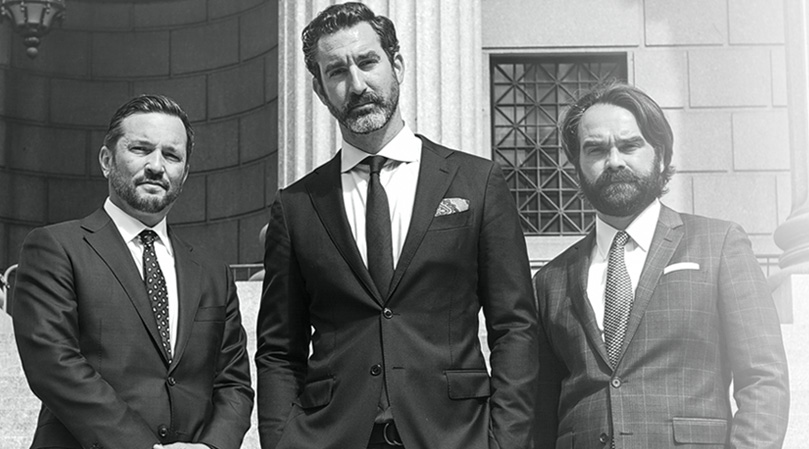The Greatest Trial Lawyer Who Ever Lived

I would urge anyone who has even a fleeting interest in criminal law or trial litigation to read a book called “Final Verdict.” The book was written by a journalist named Adela Rogers-St. Johns. Ms. St. Johns was famous for being a “girl reporter” in the 1920’s and was a frequent dinner guest at William Randolph Hearst’s castle in San Simeon, California. She had a long career in journalism and was awarded the Presidential Medal of Freedom in 1970. “Final Verdict” is the biography of Ms. St. Johns’s father, Earl Rogers. Many people today have no idea who Earl Rogers is. That’s too bad because he probably is the greatest trial lawyer who ever lived. I recognize that a statement like “greatest trial lawyer who ever lived” seems hyperbolic. This may appear especially true considering there are so many other lawyers who are more famous who lived in Earl Rogers’s time. People like Clarence Darrow often come to mind. Those other lawyers are remembered because they had publicists and because they sought out cases with a lot of media attention. Earl Rogers is remembered because he won. And he won a lot. Earl Rogers is known to have tried 77 homicide cases as a defense attorney and he won full acquittals in 74 of them. This was was an era before Brady and before discovery. This was an era when police officers routinely beat confessions out of people and when prosecutors would routinely imprison alibi witnesses so they couldn’t testify in court. This was an era when people were arrested, tried, and hanged within a matter of weeks of the crime being committed. Earl Rogers’s record of victories in a courtroom is unparalleled even today, let alone 100 years ago. While people like Clarence Darrow publicly referred to themselves as the “Great Defender” and as the “Defender of Lost Causes,” Earl Rogers quietly referred to people like Darrow as defenders of lost cases. Rogers was so prolific that there was an expression about 100 years ago that when someone was in trouble, he better “go get Rogers.”
Earl Rogers was born in Buffalo in 1869. His father, a protestant minister, moved the family to Los Angeles when Rogers was still a boy. He was admitted to practice law in 1897 and it took only a few years before his incredible run started. What made Rogers so great was that he had a personable style. While countless blowhards gave thundering speeches during their summations shortly before sending their clients to the gallows, Rogers treated jurors like they were dinner guests. He spoke to them as if he was trying to convince a friend at a bar that a certain baseball player may be better than another one. Rogers was also a great cross-examiner. Francis Wellman, who wrote the must-read “The Art of Cross-Examination” stated once that it was Earl Rogers who invented the art of cross-examination as it is used today. Lastly, Rogers was great because of his use of forensic evidence. He had a detailed understanding of human anatomy and was able to effectively cross-examine coroners on causes of death. He is also credited with bringing the courtroom into the 20th century by using trial exhibits to make the trial come alive. In one case, he famously brought into court a poker table at which a murder took place and invited the eye-witness to sit at it. In another case, he brought in the actual intestines of the decedent to prove to the jury that the decedent was shot from the ground up, which supported Rogers’s self-defense claim. How good was Earl Rogers? Clarence Darrow himself hired Rogers to represent him after Darrow was accused of bribing a juror. The trial lasted over three months. The jury acquitted Darrow in a matter of minutes. Darrow was indicted again for bribing a second juror and he decided he couldn’t let Rogers have the fame of getting a second acquittal. So Darrow defended himself. The jury hung with most jurors wanting to convict. California agreed to not try Darrow a third time if he left the state and never returned. Darrow went back to Chicago with his tail between his legs and never returned to California.
As great as Rogers was as a trial lawyer, one can’t mention him without also mentioning that he was a world-class alcoholic. Rogers was known to disappear for days at a time, to fight cops, and to frequently go to jail himself for his drunken antics. Rogers, who was a good friend of Jack London, eventually died in 1922. Despite making a fortune as a criminal defense attorney, he died penniless in a flophouse. Alcohol killed him. Despite his untimely death, he was immortalized by Erle Stanley Gardner who based the character “Perry Mason” on Rogers. People who watch “Perry Mason” tend to laugh at the preposterous way that Mason could get the real murderer to confess on the witness stand. In 1902, Rogers actually did that.
In addition to “Final Verdict,” another book written about Rogers is called “Once Upon a Time in Los Angeles” by a lawyer named Michael Lance Trope. You can find both on the internet pretty easily. Both are worth reading.

Request Your Free Consultation
Fields Marked With An “ * ” Are Required
"*" indicates required fields
The Woolworth Building
233 Broadway
Suite 701
New York, NY 10279

